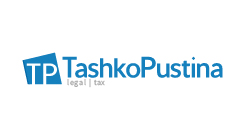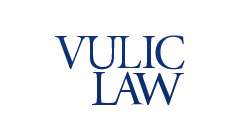Alongside blockchain and crypto currencies, the Payment Services Directive 2 (PSD2) has become a much talked-about buzzword in the FinTech world - sparking discussions about a revolution in banking and financial services. One may argue that disruption to established practices may only result from technological advancement and not from (yet another) massive bundle of regulatory rules. However, through PSD2, the shift towards open banking is being fostered by the European legislator to support innovation and improve competition in the payment services area.
Tokenized Assets in Lithuania’s Legal Environment
In recent years, blockchain technology has offered the business world a variety of new and innovative ways to improve and grow. Starting with initial coin offerings, blockchain technology has found its way into the financial services industry and many other fields of business in Lithuania. The trend of “asset tokenization” has recently become popular among companies seeking to adopt innovative modern technologies and create novel ways to apply blockchain technology when doing business. However, as convenient and simple as it may seem, asset tokenization is an extremely complicated business model, challenging not only the traditional approaches to the sale and purchase of assets, but also raising questions about the relevance of applicable laws and regulations currently in effect.
Syndicated Facilities Under Russian Law – Developments and New Challenges
Below we highlight key developments and challenges related to the new Russian law on syndicated facilities.
Legal Regulation of Virtual Currencies in the Czech Republic
The legal regulation of transactions with virtual currencies and Initial Coin Offerings / Initial Token Offerings is a topic of ever more frequent discussion in the Czech Republic. The ano-nymity of cryptocurrency transactions has been reduced by the introduction of Anti-Money Laundering (AML) rules, while the Czech regulator’s approach to the regulation of trading with virtual currencies is very liberal.
Securitization from a Slovenian Perspective
For the past five years the financial market in Slovenia has been characterized by a process involving the selling of non-performing loan and leasing receivables (“Receivables”), mostly to foreign investors. According to information published by the Bank of Slovenia, Slovenian banks still have approximately EUR 1.5 billion of non-performing loans on their balance sheets, and we expect to see more of these loans being sold in the next two years.
Bankruptcy in the Spotlight in Serbia
The past decade was rather dynamic in terms of the development of the legal framework for bankruptcy in Serbia, as, since its adoption in 2009, the Bankruptcy Law has undergone several amendments, most recently in late 2017, designed to improve the efficiency of the bankruptcy proceedings.
Croatian Law on Nullity of Loan Agreements with International Character
Back in the 2000s, the conditions for getting a loan from a Croatian bank were quite strict and complicated. Beside a good credit rating, the banks were asking for a number of securities: mortgages, guarantors, etc. Recognizing that as a good business opportunity, many foreign financial institutions (primarily banks and leasing companies, but also financial cooperatives) decided to enter Croatian market.
































